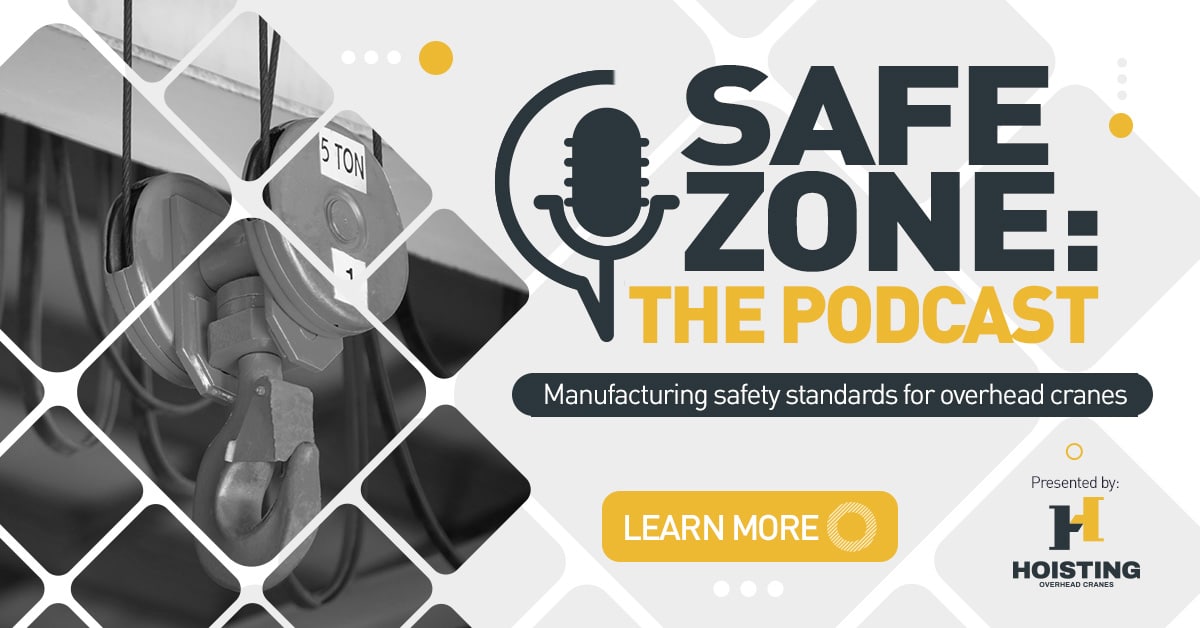In the August 2021 episode of Safe Zone, project manager Tom Kovacs, and fabrication shop supervisor Sébastien Côté of Hoisting Ltd sat down with OHS Canada editor Marcel Vander Wier. During this episode, they discussed engineering design and manufacturing safety standards for overhead cranes. Here’s the overview.
What role does engineering play in manufacturing an overhead crane?
Custom or otherwise, engineering is vital to the design of any overhead crane to ensure its safety with respect to structure, application, and even future modification.
What should a customer look for in a new overhead crane?
- Experienced Manufacturer: It’s vital for the crane to be provided by an experienced manufacturer with a solid reputation and connections to the OEM equipment they are supplying. A good manufacturer will listen to the customer and match the right piece of equipment to the specific application, saving both time and future maintenance costs.
- Certification: It’s important for customers to ensure that the crane design was designed by a professional engineer and manufactured in an CWB-certified fabrication shop.
- Experienced Technicians: When the time comes for equipment maintenance and service, the manufacturer should have crane technicians with 10,000 hours of experience, warrantied parts and equipment, and the proper certifications.
- Safety Components: It is also important to consider safety components such as: anti-collision between hoists on the same bridge beam; proper anti-collision systems between two cranes on the same runway; travel limits for bridges and trolleys; and upper block limits, lower limits, and overload limits.
What proper documentation should be supplied with an equipment turnover package?
It’s vital to ensure all standards and specifications are followed, which is why the documentation below should always be included.
- OEM manuals for the hoist and crane components
- Certified crane and runway drawings
- Certified building structural drawings
- Electrical schematic
- Structural reports
- Log book
- Load test reports
- Inspection and maintenance records
What makes Hoisting unique in the marketplace?
At Hoisting, we are committed to the highest level of safety and quality in terms of service and equipment. We set high specification standards that raise the industry bar and bring value to our customers. The turnover package we give our customers also includes all necessary OH&S documentation.
We are proud to offer our own in-house structural engineer who is familiar with manufacturing techniques, which in turn allows us to offer custom solutions. In addition, we have a powerful, industry-leading service department that ensures equipment is properly installed and maintained. As needs arise, we also provide OEM parts and rental equipment.
What is the value in your customers having proper crane operator training?
Cranes are highly specialized industrial machines involved in safety-sensitive operations. With that comes great responsibility to have experienced and properly trained operators. For example, when you increase the capacity of the crane or complexity of a lift, the risk also increases. Facing that risk takes a skilled operator. This operator must have both generalized training and training that’s specific to the exact model they intend to maneuver.
With the proper training, operators can confidently and safely use the overhead crane, leading to improved efficiency and a stronger bottom line for the company.
Listen to the full podcast episode on OHS Canada.

